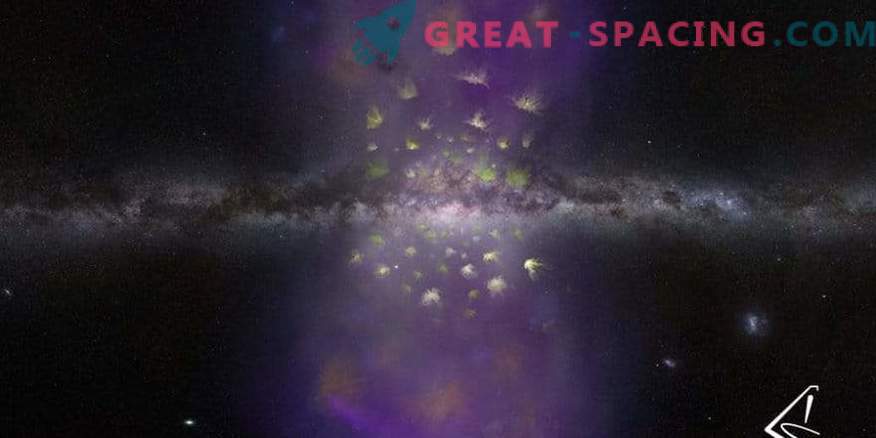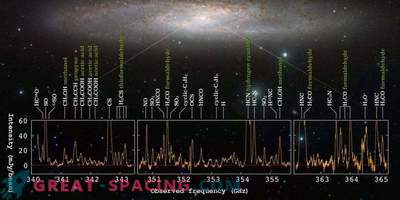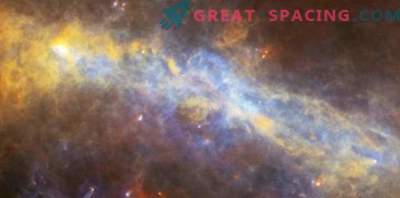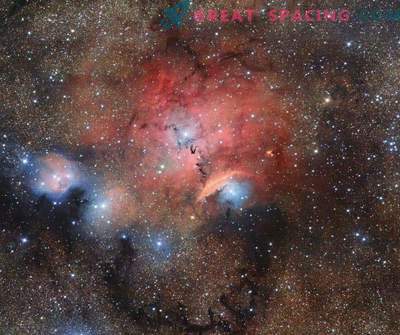
Researchers examined 100 hydrogen clouds flowing from the center of the Milky Way and heading for intergalactic space. The Green-Bank (GBT) radio telescope of the National Radio Astronomy Observatory was used for the survey. With it, you can better understand the Fermi bubbles - large balls of hot gas floating above and below the galactic disk.
The galactic center is considered a special place. At its base lies a black hole, exceeding solar massiveness several million times, and there are also areas of intense stellar birth and destruction of explosive stars.
These energy processes (individually or together) created a powerful cosmic wind that exploded two large-scale bubbles above and below the disk of the Milky Way. They are filled with gas heated to tens of millions of degrees. But it is poorly illuminated in radio, x-ray and gamma wavelengths.
However, they were able to be viewed through the Fermi telescope through gamma rays, so they received the same name. What prevents to study the hot wind? The fact is that gas is endowed with low density, which is why there is no practical ability to track its movement. This is where hydrogen clouds come into play.
If you throw a handful of dust into the air, you can track the movement of the earthly wind. Hydrogen clouds also function as test particles, demonstrating a stream of hotter invisible wind from the galactic center. The main component of the clouds is neutral hydrogen gas glowing at 21 cm. For the first time, clouds were recorded by scientists from the Australian National University. New research with a 100-meter GBT significantly expanded the observations.
It was possible to map a much larger area around the galactic center in search of additional hydrogen clouds that could be captured by the nuclear wind. The researchers found a giant swarm in which more than a hundred high-speed gas clouds huddled. Their characteristics will let you know about the shape of the site and the enormous energies.
Of course, immediately surprised by their speed. In Fermi bubbles, clouds move with an acceleration of 400 km / s. Most likely, they move inside the cone of the material, expanding upwards and moving away from the galactic center. Therefore, the front part is moving towards us, and the back is flying far.
The models created showed that clouds fill a cone extending above and below the galaxy at a distance of 5000 light years from the center. The average velocity of the clouds is 330 km / s. However, it has not yet been possible to find the edge of this swarm (where the clouds begin to disperse or become ionized).











































